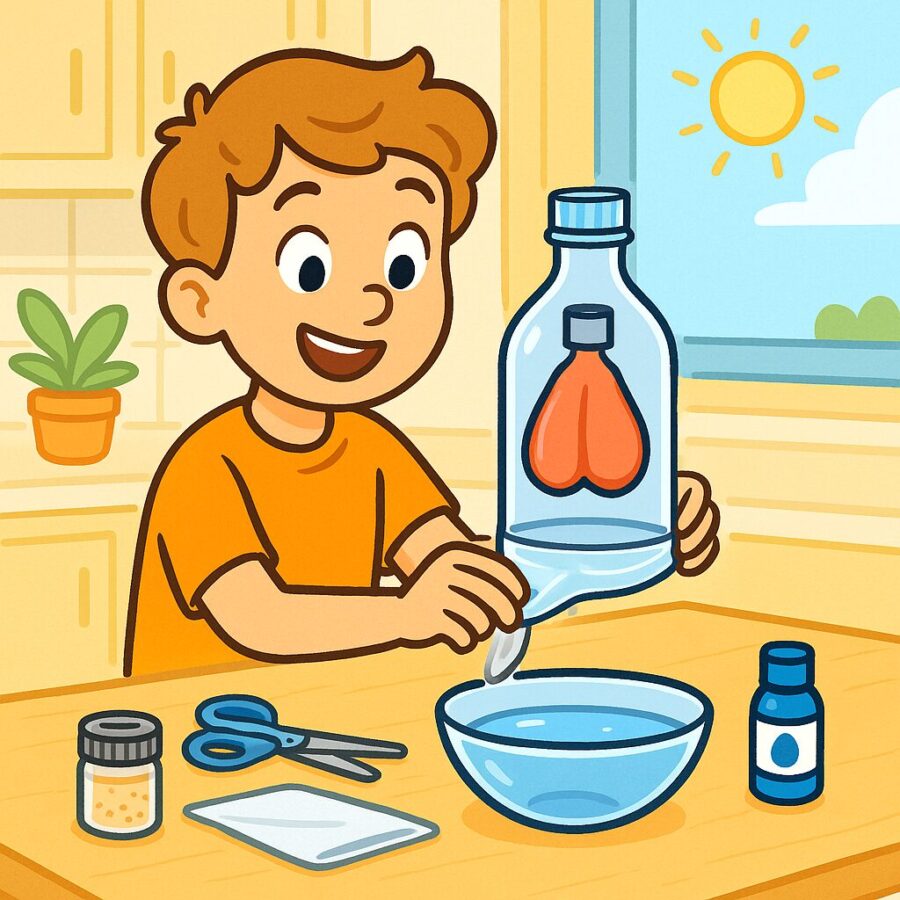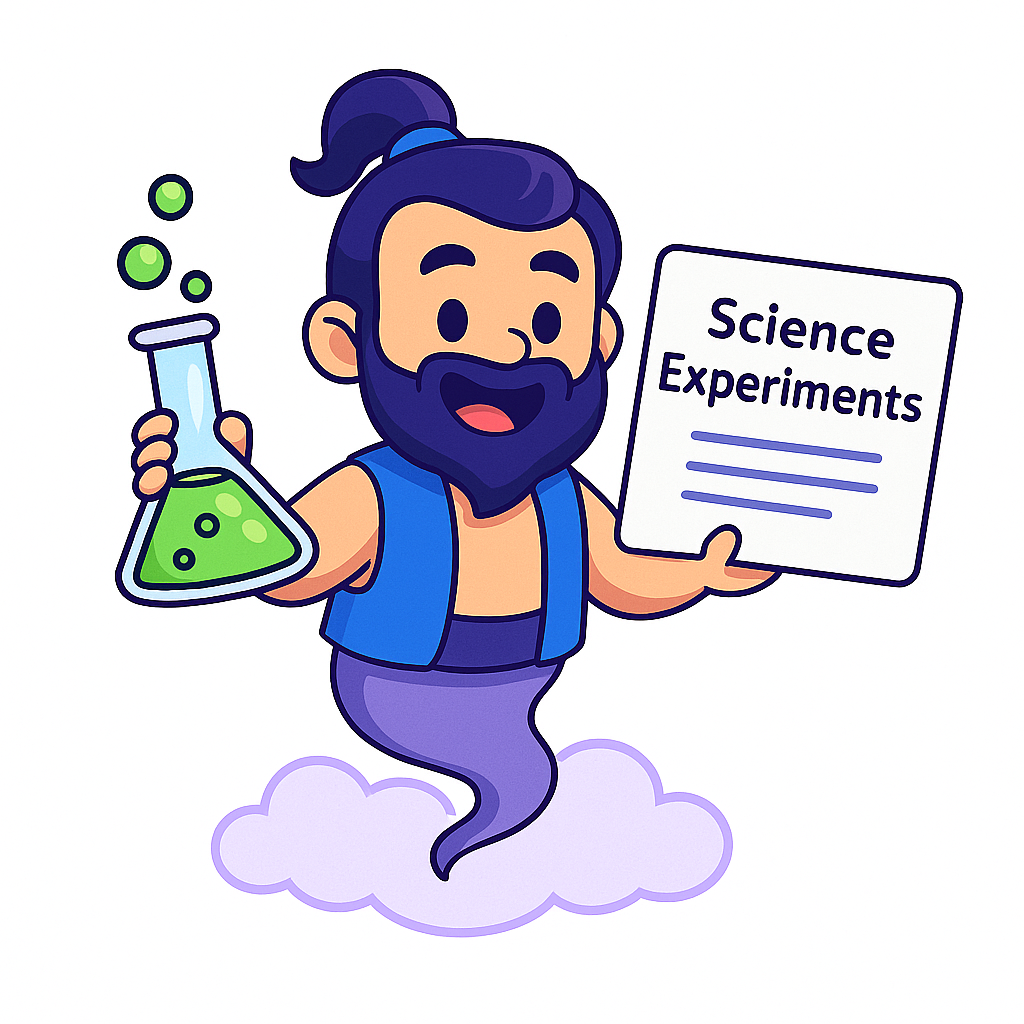 How Lungs Work: Balloon Breathing Model Science Experiment
How Lungs Work: Balloon Breathing Model Science Experiment
Have you ever wondered exactly how your lungs fill up with air when you take a breath, or why you can blow up a balloon so easily? This classic science experiment is the perfect way for children to see and feel how the lungs and diaphragm work together to make breathing possible. By using simple household materials—an empty bottle, a balloon, and a plastic bag—you and your student can build a working model of the lungs, sparking discussions about the importance of healthy lungs, the role of muscles in breathing, and much more. Read on for a detailed, parent-friendly guide to leading this lesson at home, plus teaching strategies, real-world connections, and free printables!
Experiment Details
- Grade Level: 2nd–6th Grade (great for multi-age learning!)
- Key Topics: Human Body, Respiration, Air Pressure, Models
- Estimated Time: 20–25 minutes
- Mess Factor: Low (scissors required, so supervise young students)
Purpose: To show how lungs fill with air when we breathe in, and how air is pushed out when we breathe out, by building a model with a balloon “lung” and a plastic bag “diaphragm.”
Hypothesis: If I pull down on the bottom of the bottle, the balloon inside will get bigger, just like my lungs filling with air.
What You’ll Need
- 1 empty clear plastic bottle (16 ounces or similar size)
- 1 standard balloon
- 1 sturdy rubber band
- 1 large plastic bag (like a sandwich bag or produce bag)
- Tape (clear or masking)
- Scissors (adult use only)
- A bowl of water (optional for demonstration)
- Paper towel (optional for clean-up)

Step-by-Step Instructions
- With adult help, use scissors to carefully cut the bottom off the empty plastic bottle. Smooth any sharp edges with tape.
- Stretch out the balloon to soften it, then push the balloon inside the bottle, letting the balloon’s neck stick out through the bottle’s opening.
- Pull the balloon’s neck over the bottle opening, stretching it so it fits tightly. Use a rubber band to secure the balloon tightly around the mouth of the bottle, so no air can escape at the top.
- Stretch the large plastic bag over the open, cut bottom of the bottle. Tape it in place so it covers the opening and creates an airtight seal. This plastic bag will represent the diaphragm muscle under your lungs.
- Hold the bottle with one hand. With your other hand, gently pull the plastic bag downward. Watch what happens to the balloon inside the bottle!
- Let go of the plastic bag and watch as the balloon shrinks back to its original size.
- Repeat the motion a few times. Each time you pull the bag down, observe how the balloon inflates; each time you release, see how it shrinks.
- For extra learning, try using balloons of different sizes, or test if pulling more or less changes the balloon size inside.

Results & Scientific Explanation
When you pull down on the plastic bag at the bottom of the bottle, the balloon inside inflates (gets bigger). When you let go of the bag, the balloon shrinks back. This simple model beautifully shows how our bodies move air in and out of the lungs using muscles and pressure.
- Pulling down the bag: Increases the space inside the bottle (chest). This lowers air pressure, so air is drawn in and the balloon inflates—just like inhaling.
- Letting go of the bag: Makes the space smaller again. Air is pushed out, and the balloon shrinks—just like exhaling.
- The balloon: Represents the lungs, which expand and contract with the air you breathe.
- The plastic bag: Acts like the diaphragm, the muscle beneath your lungs that moves up and down when you breathe.
- The bottle: Is your chest cavity, creating a rigid space for the lungs to expand.
How Your Lungs Actually Work
The human body has two lungs—soft, spongy organs in your chest that let you breathe. You take about 20,000 breaths each day! But your lungs can’t move on their own—they need muscles to help. The most important is the diaphragm, a thin muscle shaped like a parachute that sits right under your lungs. When the diaphragm tightens and moves downward, it increases the space in your chest, lowering air pressure and causing air to flow into your lungs. When it relaxes and moves up, it squeezes the lungs, pushing air out. The ribs and other chest muscles also help.
The balloon model is a perfect demonstration of this process: the plastic bottle is like the ribcage, the balloon is your lungs, and the bag is your diaphragm. Changing the position of the “diaphragm” changes the space and pressure inside the “chest,” causing “air” to move in and out!
Why This Model Helps Kids Understand Breathing
- Concrete visual: Kids can see the “lungs” inflate and deflate with each movement—making an abstract concept real.
- Tactile learning: Pulling on the “diaphragm” lets students feel the cause-and-effect of breathing.
- Connection to their own bodies: Encourage students to feel their chest and stomach as they breathe, noticing how everything moves together.
- Perfect for multi-age groups: Younger kids can focus on cause and effect; older kids can talk about air pressure, lung health, and the role of muscles.
Fun Facts and Extensions
- The average person breathes in and out about 12–20 times per minute!
- When you exercise, your body needs more oxygen, so you breathe faster and deeper.
- Lungs are not muscles—they rely on the diaphragm and chest muscles for movement.
- Coughing and yawning are ways your body “clears” or gets more air in the lungs.
- Lungs not only bring in oxygen but also remove waste gases (carbon dioxide).
Discussion Prompts for Homeschool Parents
- Ask your child to explain what happens in the model, then compare it to their own body.
- Challenge your student to describe why we need to breathe, and what would happen if the diaphragm didn’t work.
- Try this: Take a deep breath and notice your belly move—just like the model!
- What are some ways to keep your lungs healthy? (Exercise, avoid smoking, wash hands, etc.)
Common Misconceptions
- “The lungs are muscles.” Not true! Lungs are stretchy but need muscles (like the diaphragm) to move air in and out.
- “Air goes to your stomach when you breathe.” No—air fills the lungs, not the digestive system.
- “The model doesn’t work if air leaks in.” That’s right! A good seal is needed for the model to work, just like a healthy body needs a strong chest cavity.
Learning Objectives
- Understand how lungs expand and contract when breathing.
- Observe how muscles help the lungs work by changing air pressure inside the chest.
- Model a complex body system using simple materials.
- Practice scientific observation and drawing conclusions from a hands-on demonstration.
Teacher & Parent Tips
- Always help children with scissors or cutting plastic bottles for safety.
- Try different balloon sizes or bottle types to test how the model changes.
- Let kids observe their own breathing while using the model for real-world connections.
- Discuss why clean air and exercise are important for healthy lungs.
- If your child struggles to get the model working, check for air leaks—practice good troubleshooting!
Standards Alignment
NGSS 3-LS1-1: Develop models to describe that organisms have unique and diverse life cycles but all have in common birth, growth, reproduction, and death.
NGSS 4-LS1-1: Construct an argument that plants and animals have internal and external structures that function to support survival, growth, behavior, and reproduction.
Printable Worksheet
Want a ready-to-use printable version for your class or homeschool?

Frequently Asked Questions
The diaphragm is a flexible muscle under your lungs. The plastic bag mimics its ability to move up and down, changing the space and pressure inside the “chest.”
Plastic is safest and easiest to cut. Glass can break and is not recommended for this experiment.
Check the seal at the bottle’s mouth and the plastic bag “diaphragm”—air leaks can prevent the balloon from inflating properly.
Healthy lungs are essential for breathing well, staying active, and fighting illness. This experiment helps kids understand the importance of lung health and hygiene.
Related Experiments
- Balloon Rocket Race
- Color Changing Cabbage Juice
- Germ Spreader Challenge
- See All Science Experiments & Generator
Share Your Results!
Did you try this experiment? Share your photos, results, or questions below!
⭐ What Parents & Teachers Are Saying
Recent Feedback
There are no reviews yet. Be the first one to write one.
